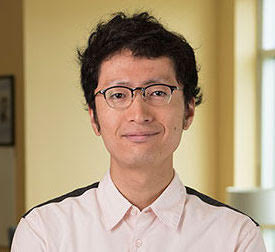 Gray Tuttle
Gray Tuttle
Leila Hadley Luce Professor of Modern Tibetan Studies, Chair of the Department of East Asian Languages and Cultures
Office: 723 Uris Hall
Office Hours: By appointment
Phone: (212) 854-4096
Email: gwt2102@columbia.edu
Educational Background
BA: Princeton University (’91)
MA: Harvard University (’96)
PhD: Harvard University (’02)
Classes Taught
ASCE UN1365 Introduction to East Asian Civilizations: Tibet
EARL GU4310 Life Writing in Tibetan Buddhism
HSEA GU4720 20th Century Tibetan History
Research Interests
Tibetan History & Religion
Gray Tuttle studies modern Tibetan history, from the 1600s to the 1950s. The role of Tibetan Buddhism in the history of twentieth century Sino-Tibetan relations as well as Tibet’s relations with the China-based Manchu Qing Empire is central to all his research. In his Tibetan Buddhists in the Making of Modern China (Columbia UP, 2005), he examined the failure of nationalism and race-based ideology to maintain the Tibetan territory of the former Qing empire as integral to the Chinese nation-state. Instead, he argues, a new sense of pan-Asian Buddhism was critical to Chinese efforts to hold onto Tibetan regions (one quarter of China’s current territory). His current research project, “Amdo Tibet, Middle Ground between Lhasa and Beijing (1578-1865),” is a historical analysis of the economic and cultural relations between China and Tibet in the early modern periods (16th – 19th centuries) when the intellectual and economic centers of Tibet shifted to the east, to Amdo — a Tibetan cultural region the size of France in northwestern China. Deploying Richard White’s concept of the “Middle Ground” in the context of two mature civilizations — Tibetan and Chinese — encountering one another, this book will examine how this contact led to three dramatic areas of growth that defined early modern Tibet: 1) the advent of mass monastic education, 2) the bureaucratization of reincarnate lamas’ charisma and 3) the development of modern conceptions of geography that reshaped the way Tibet was imagined. Recently he has turned to increasingly large data sets in an effort to ask and answer new questions about Tibetan history. In an effort to ask and answer new questions about Tibetan history, Gray has turned to increasingly large data sets over the course of his career. Starting with a database of over 1000 Amdo monasteries with dozens of fields of data (GIS location, foundation data, number of monks, rooms, livestock, etc), led to building datasets on 100s of incarnation series and monastic colleges as well, which have shaped the direction of the Amdo history book project in significant ways. Lately, with a research assistant, Gray has worked with larger datasets and the statistical computing and graphing programming language called “R” to examine existing data on Tibetan (mostly monk’s) longevity in comparison with Chinese monks, Chinese literati, and Europeans in history. Future plans include working with even larger datasets by examining the hydrology of the Tibetan plateau with climate scientists, to see if new perspectives of the large arcs of Tibetan history might be reframed by a deeper understanding of climate data.
Selected Publications
With Lan Wu. “Tibetan Buddhist Vanguards among the Mongols and Manchus, 1576-1638.” Revue d’Etudes Tibétaines, (October 2021).
“Pattern Recognition: Tracking the Spread of the Incarnation Institution through Time and across Tibetan Territory.” Revue d’Etudes Tibétaines. 38 (February 2017)
Ethnic Conflict and Protest in Tibet and Xinjiang: Unrest in China’s West. Co-edited with Ben Hillman. New York: Columbia University Press, 2016.
Sources of Tibetan Tradition (co-editor, Columbia, 2013)
The Tibetan History Reader (co-editor, Columbia, 2013)
Tibetan Buddhists in the Making of Modern China (Columbia, 2005)



